You know that feeling when you see something that just doesn’t seem right? Your brain does a little double-take, trying to process what you’re witnessing. That’s exactly what happens when you encounter a river that appears to be flowing uphill. It’s not magic or supernatural forces at play, but rather fascinating combinations of physics, perception, and natural phenomena that create these mind-bending spectacles.
The truth is, rivers can’t actually defy gravity permanently. Yet around the world, there are documented cases of waterways that seem to break this fundamental law of nature. From optical illusions that trick your eyes to temporary reversals caused by natural forces, these mysterious rivers have captivated scientists and tourists alike for centuries. So let’s dive in and uncover the truth behind these gravity-defying waterways.
The Science Behind Optical Illusions

At the heart of every “gravity hill” or “uphill river” lies not a defiance of natural law, but a masterful trick played on the human brain. These phenomena are powerful demonstrations of optical illusions, where our visual system misinterprets sensory information, leading to a conclusion that starkly contradicts reality. The water isn’t flowing uphill; rather, our brain has been convinced that the downhill slope is, in fact, an incline.
Our most fundamental tool for judging what is level is the horizon line. From an early age, we learn that the horizon represents a true horizontal, a stable and reliable reference point against which we can measure every other angle and slope. The problem at so-called “mystery spots” is that this critical reference is almost always obscured or distorted.
Basically, it’s an optical illusion, a trick of the eye played by the surrounding landscape. The horizon gets hidden, trees bend in odd ways, and suddenly, your brain is convinced that a gentle downhill slope is actually going up. People often overestimate the steepness of a slope. If you are standing on a slope of 1° it will seem like a slope of 5°, and if you stand on a slope of 5° it may seem like you are on a slope of 30°.
Famous Gravity Hills and Magnetic Hills

Scotland’s Electric Brae is a famous gravity hill where a nearby stream seems to flow uphill. The illusion, caused by the land’s unique shape and orientation, has fascinated visitors for generations. This creates an optical illusion, making a slight downhill look like an uphill slope. Objects might then appear to roll uphill. Sometimes even rivers seem to flow against gravity.
These locations have become tourist attractions worldwide. These sites, often called “gravity hills” or “magnetic hills,” have become tourist attractions and local curiosities, fueling a common misconception that unique geological or magnetic forces are at play, creating a genuine exception to physical laws. A search on the web turns up a surprising number of examples of this illusion. Most are natural, while others have been constructed in theme parks.
From Pennsylvania’s Gravity Hill to New Brunswick’s Magnetic Hill, these spots continue to baffle visitors. Even when the true cause is understood, it can be difficult to believe. In some cases the sea horizon is partly visible and it seems incredible that the effect can be an illusion. The visual evidence is so compelling that many refuse to accept the scientific explanation.
Tidal Bores: When Rivers Actually Reverse
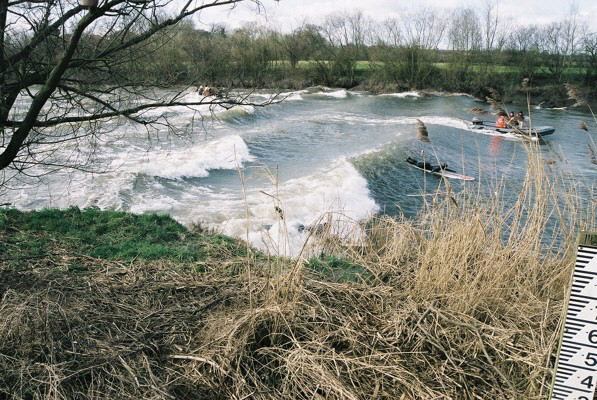
A tidal bore, often simply given as bore in context, is a tidal phenomenon in which the leading edge of the incoming tide forms a wave (or waves) of water that travels up a river or narrow bay, reversing the direction of the river or bay’s current. It is a strong tide that pushes up the river, against the current. Bores occur in relatively few locations worldwide, usually in areas with a large tidal range (typically more than 6 meters (20 ft) between high and low tide) and where incoming tides are funneled into a shallow, narrowing river or lake via a broad bay.
Only about 100 rivers worldwide are known to produce this effect, and they all share a specific set of geographical characteristics. The single most important factor is an exceptionally large difference between high and low tide. These coastlines are known as macrotidal, typically experiencing a tidal range of over 6 meters (20 feet). This huge differential creates an immense volume of water that needs to rush into the river mouth as the tide comes in.
The moon and sun’s gravity pulls at the ocean, and when the tide comes in, it pushes water upstream, reversing the river’s flow. Think of the Thames in London or the Hudson in New York – they both experience this tidal push-and-pull every single day. Examples include the Hudson River, Saint John River, Salmon River, Yarra River, Thames River, Senegal River, Gambia River, Shatt al-Arab River, Salween River and Mekong River.
The Mighty Qiantang River: Nature’s Most Spectacular Reverse
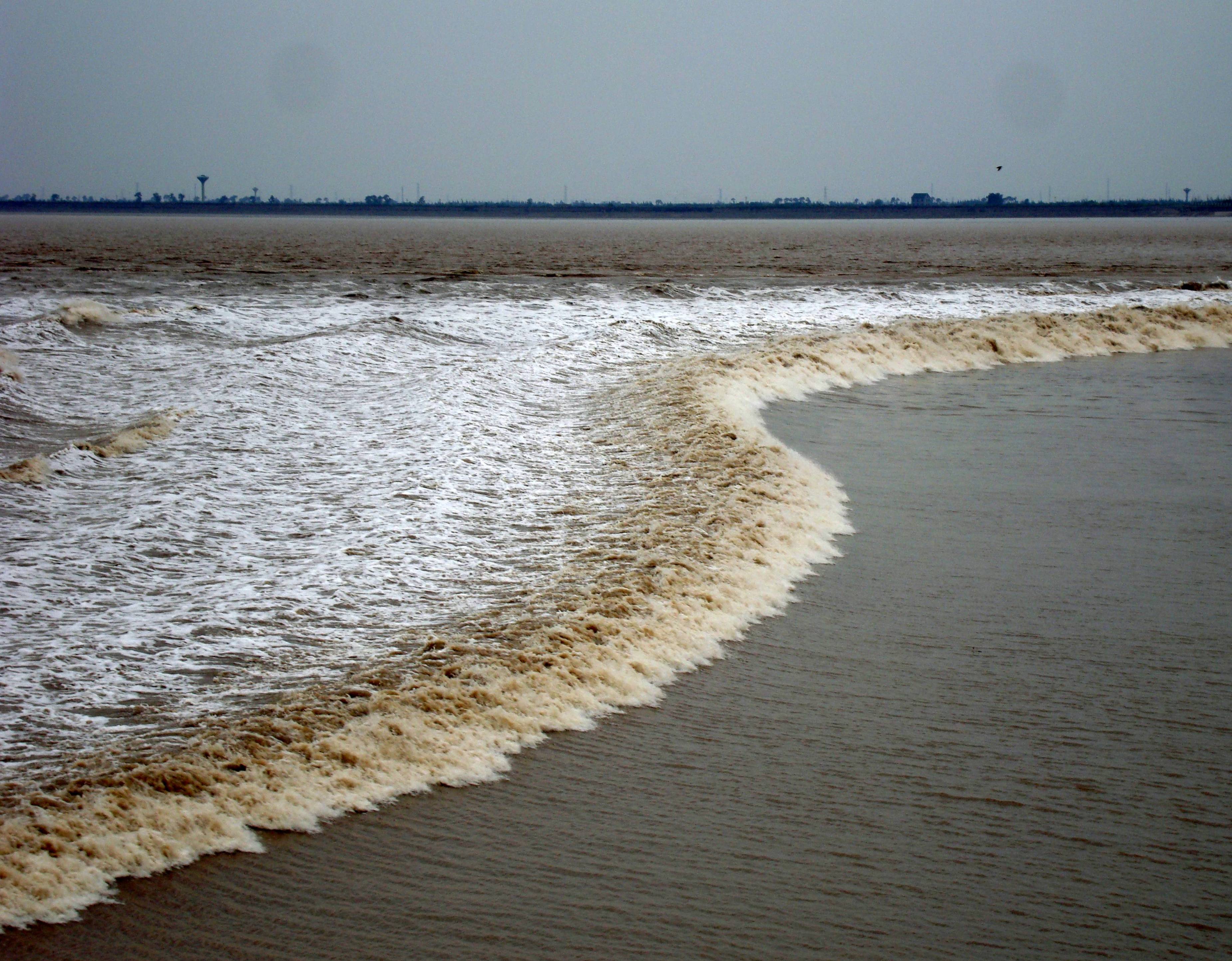
The river is also known, along with Hangzhou Bay, for having what is called by locals as the “Silver Dragon”, the world’s largest tidal bore, a phenomenon where the leading edge of the incoming tide forms a wave (or waves) that can rise to a height of 9 meters (30 ft) and travels up the river or narrow bay at top speeds of 40 km/h (25 mph; 11 m/s) against the direction of the river or bay’s current, and can be seen from miles away. This incredible spectacle draws hundreds of thousands of tourists annually.
The Hangzhou Bay, into which the Qiantang river empties, is more than 60 miles across at its mouth, but it narrows to a gap less than 13 miles across where it meets the Qiantang. As high tides enter the bay, they’re funneled in toward the river’s mouth, spawning massive high tides and especially strong tidal bores. The Qiantang river at Hangzhou in China has the largest tidal river bore in the world, which can be over 4m high, 3km wide, and travelling with a speed in excess of 24km hr−1 (15mph).
The Qiantang River tide is one of the world’s three strongest tidal event locations, along with the Amazon in South America and the Ganges in India. The tidal bore draws in tourists where in the middle of the 8th month of the lunar calendar, there would be crowds celebrating the wave in the “festival of the Silver Dragon” and thousands would line the streets and watch the tidal wave roll in from the sea.
Cambodia’s Tonlé Sap: The World’s Only Seasonal Flow Reversal

In fact, the Tonle Sap is the only river in the world that flows both ways seasonally, reversing direction twice a year. In the monsoon season (May to October), the Mekong River floods and causes the water to back up into the Tonle Sap River, reversing its flow. Among the most interesting features of the river is that monsoon-season rainfall swells the river’s volume so greatly that in low-lying Cambodia, one of the Mekong’s southernmost tributaries is forced to reverse course against the rushing floodwaters. Beginning in June, the roughly 100-kilometer-long (62 miles) Tonle Sap River will begin to be inundated by the rising waters of the Mekong, and will slowly backtrack and begin filling the Tonle Sap Lake.
The area of the lake increases six-fold, from 2,500 km2 to 16,000 km2. Since the Tonle Sap lake has no other outlet, the inflow from the river also expands the lake to more than four times its normal area, from approximately 1,050 square miles to 4,500 square miles at its peak! For about five months every year, the Tonle Sap Lake can lay claim to the title of the largest freshwater lake in Southeast Asia.
This remarkable phenomenon supports millions of lives. In fact, the Tonle Sap is one of the most productive fishing lakes in the world, supporting over three million people and providing over 75 percent of Cambodia’s annual inland fish catch and 60 percent of Cambodians’ protein intake. Its fish species richness and productivity is ranked fourth in the world.
Storm Surges and Weather-Driven Reversals
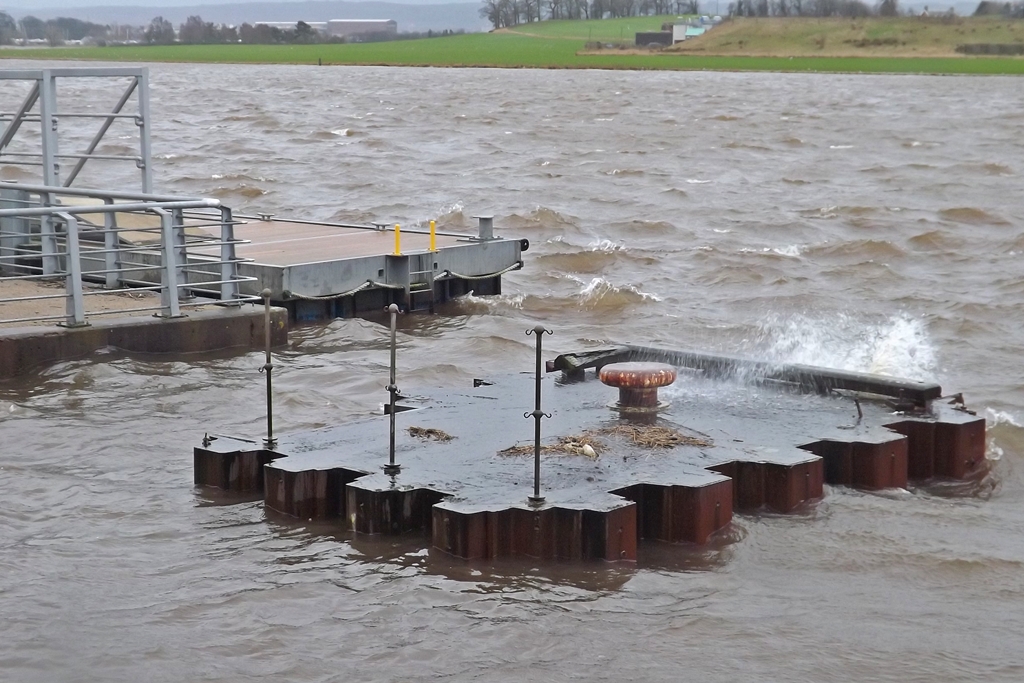
Hurricanes and typhoons are forces of nature to be reckoned with, and their storm surges can be incredibly powerful. Imagine a wall of water surging up a river – it’s enough to completely reverse its flow! The Mississippi River famously did this after Hurricane Isaac in 2012. The surge from the Gulf was so intense, it overwhelmed the river and sent it flowing backwards. Extreme weather like hurricanes can push ocean water back into rivers, reversing their flow temporarily. These events are dramatic but short-lived.
During periods of heavy rainfall or flooding, rivers may temporarily appear to flow uphill due to backflow. When downstream sections become overwhelmed, water pressure forces the current upstream until normal conditions resume. Strong winds blowing against the current can create the illusion of uphill flow by disturbing the river’s surface.
These temporary reversals demonstrate nature’s incredible power to temporarily override the normal flow patterns that govern our waterways. However, they’re always short-lived events that eventually give way to gravity’s relentless pull downward.
Human Engineering: When We Force Rivers Backward
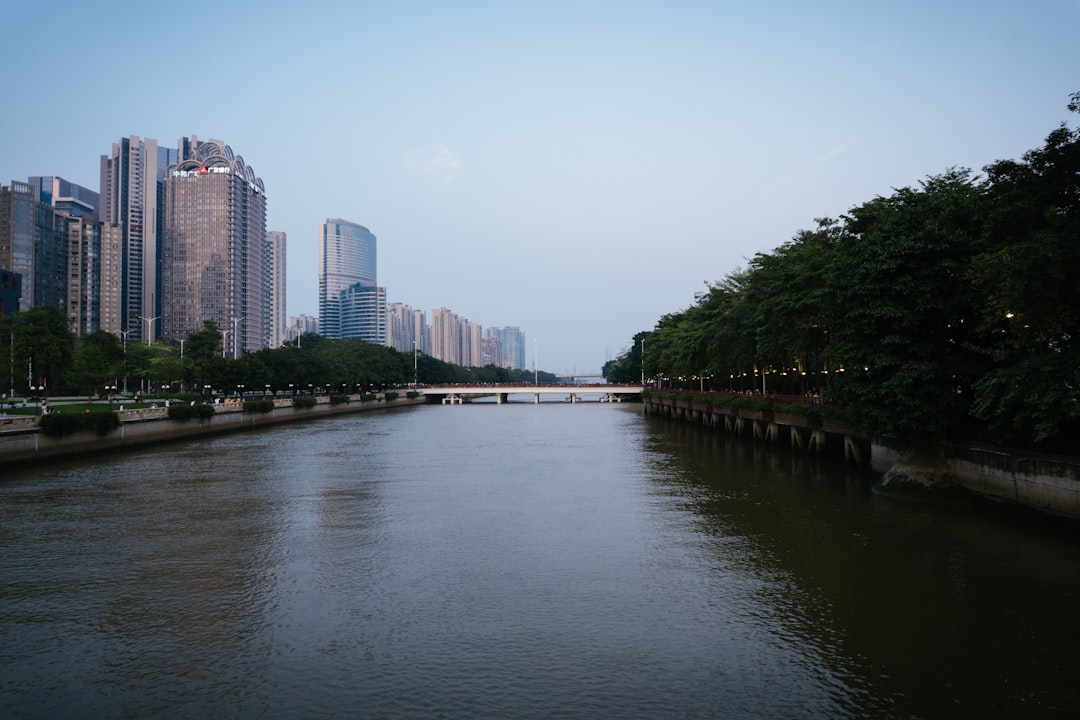
One of the most iconic backward-flowing rivers isn’t a natural occurrence – it’s an example of what happens when humans decide to alter the course of nature. In the 1800s, the city of Chicago faced a deadly problem. Waste and sewage from the growing population were being dumped into the Chicago River, which flowed into Lake Michigan – the city’s main source of drinking water. So in 1900, engineers performed what many called a miracle: they built the Chicago Sanitary and Ship Canal, reversing the river’s flow away from Lake Michigan and toward the Mississippi River system.
Chicago River: Reversed direction in 1900 to divert sewage away from Lake Michigan, a drinking water source, by constructing the Chicago Sanitary and Ship Canal. This wasn’t a small change. It required years of digging, planning, and constructing one of the largest public works projects of its time. The reversal successfully saved the city from waterborne diseases – and the river still flows backward today, compared to its original direction.
This engineering marvel proves that human innovation can indeed override natural flow patterns when survival demands it. The Chicago River remains one of the most successful examples of intentional river reversal in history.
Why True Uphill Flow Is Impossible
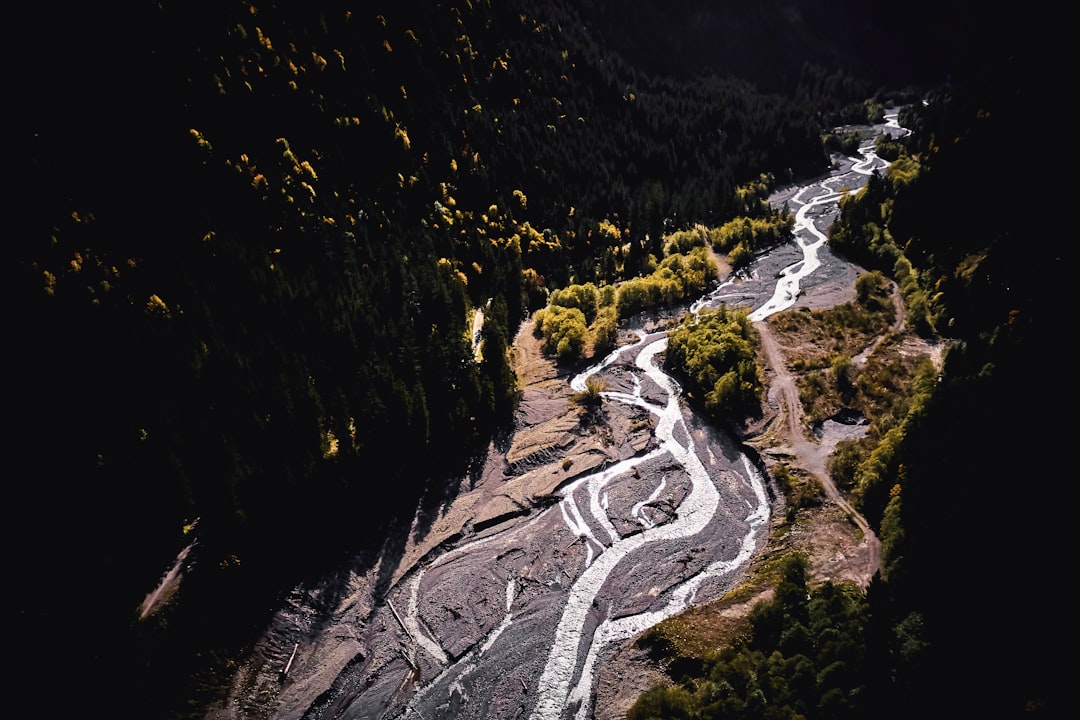
Despite appearances, rivers do not defy gravity. Uphill flow is always the result of external forces – whether optical illusions, tidal movements, or geological changes. The principles of physics ensure that water always seeks the lowest point, even when it behaves unexpectedly. Rivers naturally flow downhill due to the pull of gravity, guiding water from high elevations to low. Without these external forces or human intervention, rivers will always follow the path of least resistance, flowing downhill toward the ocean.
Gravitational anomalies are always very small. In any case, how would you ever notice a gravitational anomaly? – after all, your sense of balance would be affected equally to how objects would be affected. However, this effect is very small – the largest vertical deflection found on Earth (in some parts of the Himalayas) is a measly 100 arc seconds, or about 5 inches per thousand feet (or 48 cm per km). So, assuming that you have a super-massive mountain next to a super-flat plain, you might have a river that flows in a direction of increasing elevation continuously in a small area, for a few decades until it eroded the land enough to change the direction again.
The fundamental laws of physics remain unbreakable. Water will always seek its lowest possible level, following gravity’s inexorable pull toward sea level. Any apparent exceptions have logical explanations rooted in science.
Conclusion
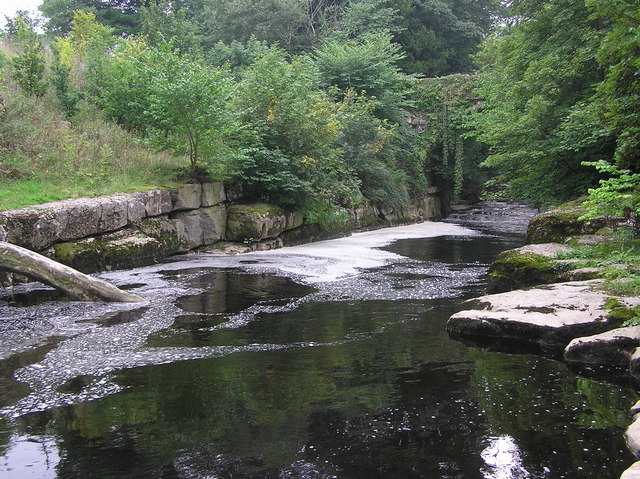
Rivers that appear to flow uphill continue to fascinate us precisely because they challenge our understanding of the natural world. Rivers that flow uphill remind us of the complexities of natural science and the limits of human perception. By understanding the forces behind these phenomena, we can appreciate the intricate balance of nature, where even the most puzzling occurrences have logical explanations. Whether created by optical illusions, tidal forces, storm surges, or human engineering, these mysterious waterways reveal the incredible complexity of our planet’s hydrological systems.
The next time you encounter claims of gravity-defying rivers, remember that science always has an explanation. From the mighty Qiantang River’s spectacular tidal bore to the seasonal reversal of Cambodia’s Tonlé Sap, these phenomena showcase nature’s power to temporarily overcome expected patterns while never truly breaking the fundamental laws that govern our world.
What do you think about these remarkable waterways? Have you ever witnessed a river that seemed to defy gravity? Tell us about your experiences in the comments.

Hi, I’m Andrew, and I come from India. Experienced content specialist with a passion for writing. My forte includes health and wellness, Travel, Animals, and Nature. A nature nomad, I am obsessed with mountains and love high-altitude trekking. I have been on several Himalayan treks in India including the Everest Base Camp in Nepal, a profound experience.




